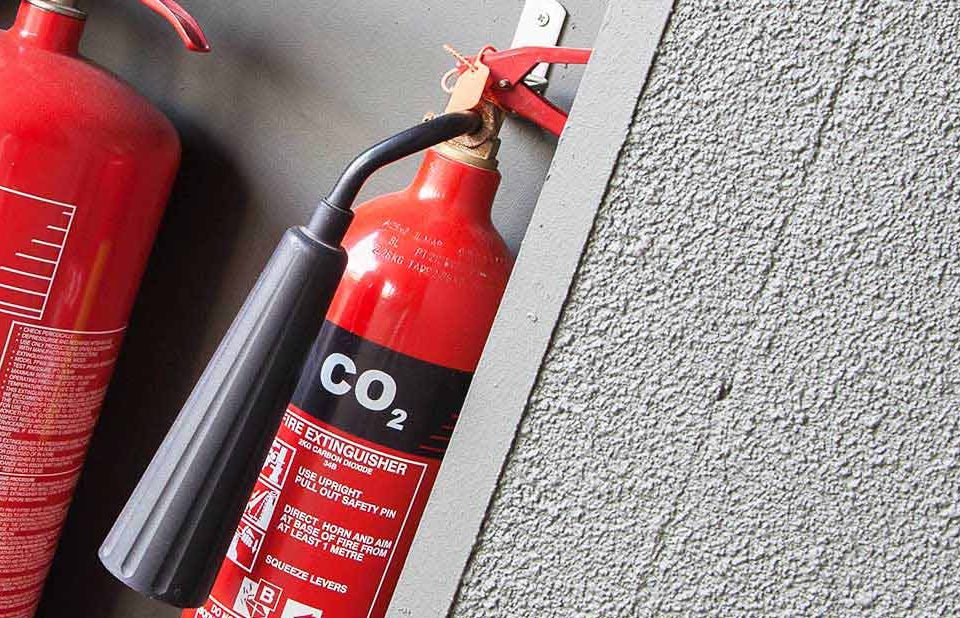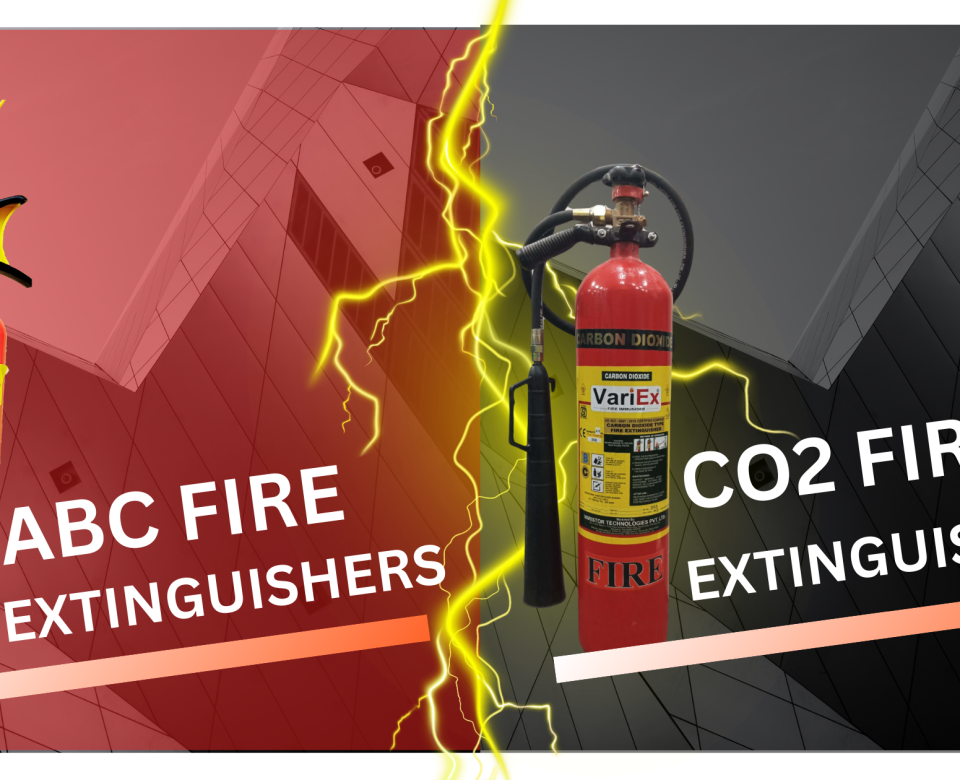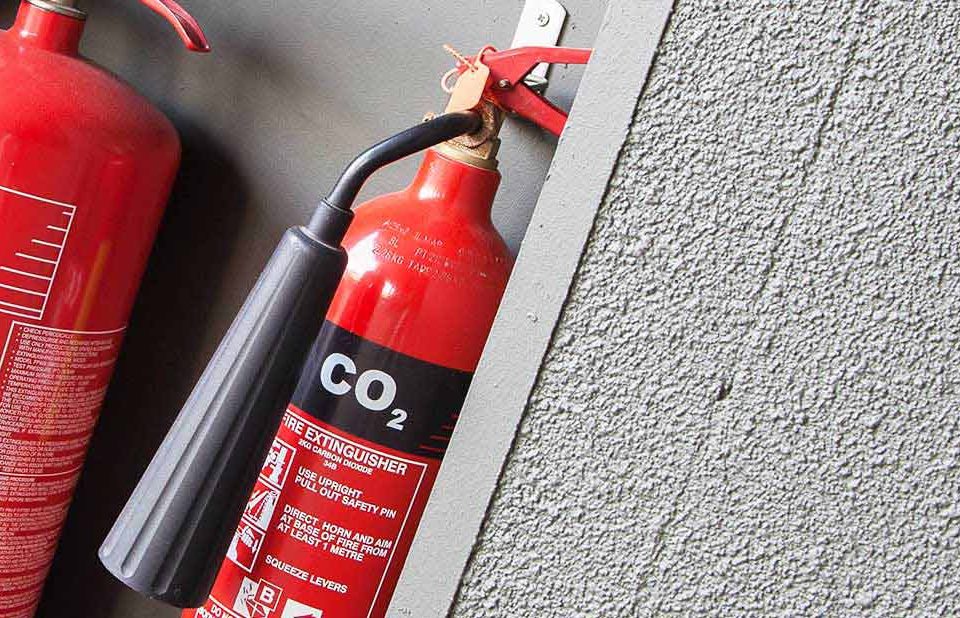
Fire Extinguisher Cylinder Care: Preventing Damage and Leaks
August 18, 2025
Fire Extinguisher Cylinder Safety Testing and Hydrostatic Pressure Checks
August 26, 2025Smart buildings are transforming how we live and work by integrating advanced technologies to enhance comfort, efficiency, and safety. One critical aspect of these intelligent infrastructures is fire safety. Fire extinguishers, a traditional but essential safety tool, are now evolving to play a key role in smart building safety networks. When connected to the Internet of Things (IoT) and smart systems, fire extinguishers improve safety, speed up emergency responses, and help ensure compliance with regulations.
Understanding Smart Building Safety Networks
Smart building safety networks use interconnected technologies like IoT sensors, artificial intelligence (AI), automation, and cloud-based monitoring to prevent, detect, and respond to hazards more effectively. These systems link various safety devices, including smoke detectors, fire alarms, sprinklers, and fire extinguishers, creating a coordinated response that can save lives and property.
Traditional Fire Extinguishers vs. Smart Integration
Traditional fire extinguishers, such as the common fire extinguisher cylinder filled with fire extinguisher gas like CO2 or dry chemicals, offer essential fire-fighting capabilities. However, they are typically standalone devices requiring manual inspection for pressure, damage, or expiration.
Smart-enabled fire extinguishers upgrade this functionality by integrating sensors that monitor factors like pressure levels, tampering, and expiration dates in real-time. These smart extinguishers can send data to a central system, ensuring that all equipment is in working condition and accessible when needed.
The Role of Fire Extinguishers in Smart Safety Ecosystems
Monitoring and Maintenance
IoT sensors embedded in fire extinguishers track their status continuously. They monitor pressure, detect if the device has been tampered with, and warn about approaching expiration dates. Automated alerts notify maintenance teams to perform timely inspections or refills, avoiding the risk of malfunction during emergencies.
Location Tracking & Accessibility
Smart building safety networks digitally map every fire extinguisher, including innovative devices like the fire extinguisher ball (or fire ball), an automatic extinguishing device deployed on fires. Knowing the exact location of extinguishers, such as car fire extinguisher units or fixed cylinders, helps responders reach hazards quickly. In Pakistan, for instance, monitoring devices help in managing fire extinguisher ball price in Pakistan and availability efficiently.
Emergency Response Integration
Fire extinguishers are integrated with other safety systems like smoke detectors, sprinklers, and alarms. When a fire is detected, the system can guide occupants via mobile apps or public address systems with instructions, reducing panic and ensuring safe evacuation. The fire safety network can also activate automatic devices like wet chemical fire extinguishers, which are especially effective for kitchen fires.
Benefits of Smart Fire Extinguisher Integration
- Faster response times: Automated alerts ensure extinguishers are ready and responders know their exact location.
- Improved compliance: Real-time monitoring helps meet fire safety regulations without relying on manual checks.
- Reduced human error: Predictive maintenance reduces the chance of expired or faulty equipment.
- Cost savings: Avoid costly damages through timely servicing based on sensor data.
Challenges & Considerations
- Initial investment: Smart fire safety systems, including sensors and integration software, require upfront spending beyond the typical fire extinguisher price.
- Data security: IoT devices must be protected from cyber threats to maintain system integrity.
- Training: Staff and occupants need guidance to properly use and trust smart fire safety measures.
Future of Fire Safety in Smart Buildings
The future holds exciting possibilities, such as AI-powered predictive fire prevention that identifies risks before they develop. Deeper integration with Building Management Systems (BMS) could create fully automated safety ecosystems, with devices like smart fire blankets and fire buckets also being monitored for readiness.
Conclusion
Fire extinguishers have come a long way from being simple cylinders filled with CO2 fire extinguisher gas or dry chemicals. Today, their integration into smart building safety networks offers a proactive, data-driven approach to fire prevention and response. Property managers and developers should consider upgrading to smart fire safety systems to ensure faster, safer, and more reliable fire protection.
For expert advice on smart fire safety solutions, including the best options for your building’s needs or inquiries about different types of extinguishers, from traditional cylinders to innovative fire balls, contact Haseen Habib today. Protect your property and people with the latest in fire safety technology!




